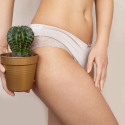Mastering the Art of Porous Hair Care: A Comprehensive Guide
 Porous hair, characterized by its ability to absorb and lose moisture quickly, requires specific care to maintain its health and appearance. Understanding how to properly manage porous hair can make a significant difference in its texture, strength, and overall vitality. This guide provides detailed strategies for managing porous hair and restoring its natural balance.
Porous hair, characterized by its ability to absorb and lose moisture quickly, requires specific care to maintain its health and appearance. Understanding how to properly manage porous hair can make a significant difference in its texture, strength, and overall vitality. This guide provides detailed strategies for managing porous hair and restoring its natural balance.Understanding Porous Hair
Porous hair has an open cuticle structure, which allows moisture to enter and exit more rapidly than in less porous hair. This characteristic can result in various issues, such as frizz, dryness, and difficulty in retaining color. Identifying whether your hair is porous can help in tailoring an effective care routine.
Key Signs of Porous Hair
Before implementing a care routine, it’s essential to recognize the signs of porous hair:
Rapid Moisture Absorption and Loss: If your hair quickly absorbs water but also dries out fast, it may be highly porous.
Frizz and Dryness: Porous hair often appears frizzy and dry, even after conditioning.
Color Fading: Hair dye may fade more quickly on porous hair due to its inability to hold color effectively.
Strategies for Managing Porous Hair
To enhance the health of porous hair, consider the following strategies:
1. Hydration is Key
Porous hair thrives on moisture. Regularly using deep conditioning treatments can help restore and maintain hydration:
Leave-In Conditioners: Applying leave-in conditioners can provide ongoing moisture throughout the day.
Hydrating Masks: Use hydrating hair masks weekly to deeply nourish and repair your hair.
2. Protein Treatments
Protein helps to strengthen porous hair and repair damage:
Protein-Rich Products: Incorporate products containing hydrolyzed proteins, such as keratin or silk, which help to rebuild and reinforce the hair structure.
DIY Protein Treatments: Homemade treatments using ingredients like eggs or yogurt can also offer protein benefits.
3. Avoid Heat and Harsh Chemicals
Minimizing heat styling and chemical treatments can prevent further damage:
Heat Protection: Always use a heat protectant spray before using styling tools to reduce heat damage.
Gentle Products: Opt for sulfate-free shampoos and avoid harsh chemicals that can exacerbate porosity.
4. Proper Drying Techniques
How you dry your hair can impact its health:
Pat Dry: Instead of rubbing your hair with a towel, gently pat it dry to avoid friction that can cause breakage.
Air Dry: Whenever possible, allow your hair to air dry to minimize heat exposure.
5. Sealing in Moisture
To retain moisture longer, sealing your hair can be highly effective:
Oils and Butters: Apply natural oils, such as argan or coconut oil, to the ends of your hair to lock in moisture.
Sealants: Use products designed to seal the hair cuticle and prevent moisture loss.
6. Regular Trims
Keeping your hair ends healthy by trimming them regularly can help prevent split ends and further damage:
Trim Every 6-8 Weeks: Regular trims can help maintain the overall health and appearance of porous hair.
7. Protective Hairstyles
Wearing protective hairstyles can shield your hair from environmental stressors:
Braids and Buns: Styles that keep your hair secured can reduce exposure to the elements and minimize damage.
Silk or Satin Pillowcases: Using these pillowcases can help reduce friction while you sleep, preventing hair breakage.
Choosing the Right Products
Selecting the right hair care products is crucial for managing porous hair effectively:
Moisturizing Shampoos and Conditioners: Look for products specifically formulated for dry or damaged hair.
Leave-In Treatments and Serums: Choose leave-in products that offer hydration and repair benefits.
Conclusion
Managing porous hair involves a comprehensive approach that includes hydration, protein treatments, and proper hair care practices. By understanding the unique needs of porous hair and implementing these strategies, you can improve its health, appearance, and manageability. Adopting a tailored hair care routine will help restore balance and enhance the overall quality of your hair.









